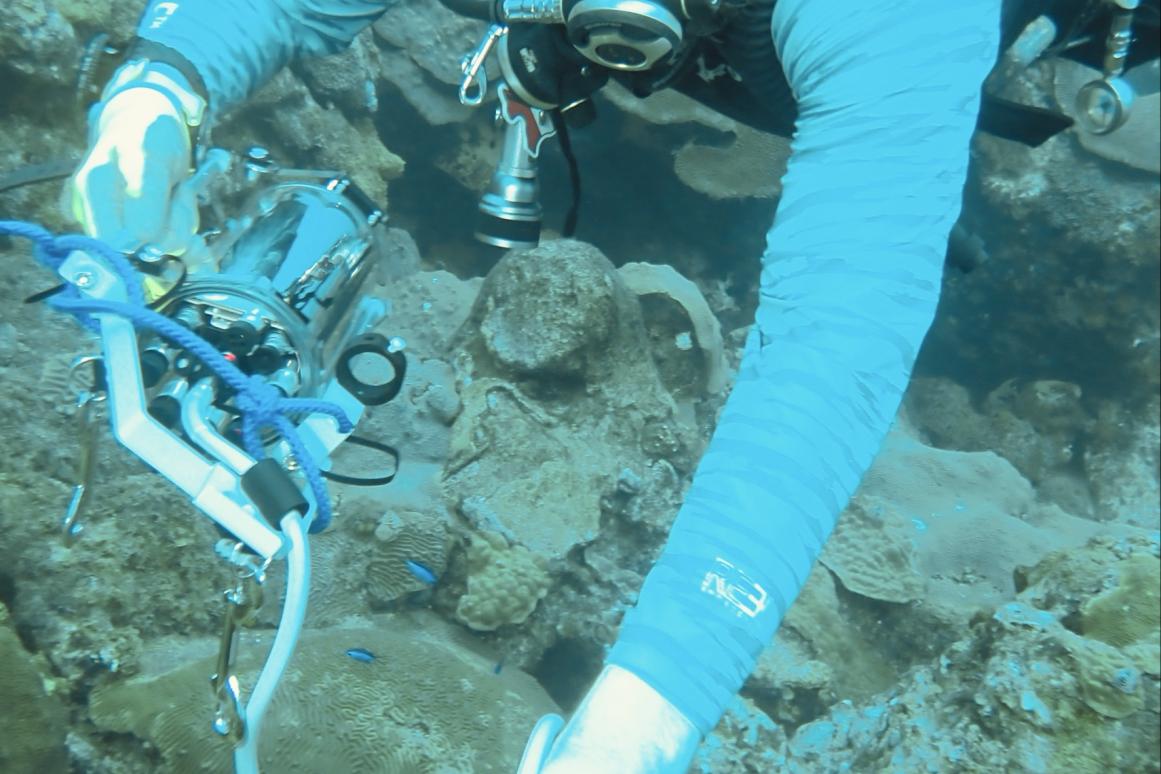HRI Coral Scientists Help Monitor One of World’s Healthiest Reefs, Bring Corals to State of the Art Research Facility

The Flower Garden Banks National Marine Sanctuary (FGBNMS), located about 100 miles off the Texas coast, is home to some of the healthiest coral reefs in the world. In July, the Harte Research Institute (HRI) at Texas A&M University-Corpus Christi (TAMU-CC) played a key role in its ongoing scientific study and conservation.
Dr. Keisha Bahr, HRI’s Chair for Coral Reef and Ocean Health, and research aquarist Jack Willans joined more than 25 researchers from across the Gulf for the annual long-term monitoring cruise led by FGBNMS and the National Oceanic and Atmospheric Administration (NOAA).
In addition to contributing to coral health assessments, the HRI team brought back 12 living coral samples to the institute’s growing coral research facility in Corpus Christi. These corals will support ongoing and future studies aimed at better understanding and preserving these rare and vital ecosystems.
“The Sanctuary staff and stewards of the Flower Garden Banks have been monitoring these reefs since the late 1980s, making it the longest-running coral reef monitoring program in the United States,” Bahr said. “It’s also one of the healthiest coral reefs around. We’re excited to support these incredible efforts and ensure it remains healthy, while collaborating, sharing knowledge, and driving new research to advance coral conservation of these unique ecosystems.”
The Flower Garden Banks National Marine Sanctuary spans 17 reefs and banks — underwater mountains formed by salt domes, with reef-building corals thriving on top. The reefs support a rich diversity of marine life, including manta rays, various fish species, and sea turtles. Covering more than 160 square miles of protected waters, the sanctuary is also connected to 31 states and Canada through our watersheds.
Each year, the FGBNMS staff conduct long-term monitoring, including underwater photo documentation, fish surveys, and water quality monitoring on the East, West, and Stetson Banks. They also partner with other organizations to complement their ongoing work. For this year’s trip, one of Bahr’s goals was to include assessments of coral health and link to coral coloration as an indicator of ocean health.
Other participating institutions on the trip included Moody Gardens, University of Alabama-Birmingham, Florida Atlantic University, Louisiana State University, and Texas A&M-Galveston.
Researchers from HRI collected samples of two coral species to study in Corpus Christi, focusing on their resilience and susceptibility to environmental stressors. The Flower Garden Banks reef is further offshore and deeper than most coral reefs worldwide.
“These corals might have a higher tolerance to stress than those that have never been stressed, but we can’t say for sure — it could go either way,” Bahr explained. “Knowing their stress thresholds will help us predict how they’ll fare in the future, whether in 10, 20, or even 50 years. Right now, we don’t have that data, but that’s exactly what we’re working to uncover.”
With every mission, HRI is not only advancing one of the nation’s most vital reef monitoring initiatives, but also generating the critical knowledge needed to protect coral reefs for future generations.
